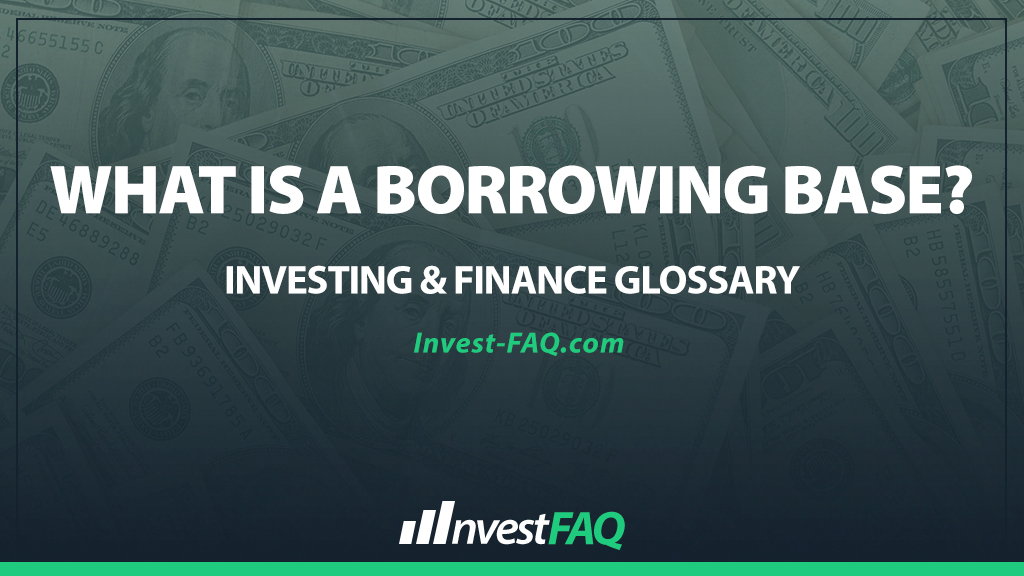
Borrowing Base
Contents
A borrowing base is a metric that determines the amount of money a lender is willing to loan to a company, based on the value of the collateral the company offers. This collateral often includes receivables, inventory, and sometimes, fixed assets, which are periodically evaluated to ensure the loan remains adequately secured.
In business, the borrowing base is a critical component of asset-based lending, a financing strategy where credit availability is directly tied to the value of certain assets on the company’s balance sheet.
This approach provides businesses with a flexible financing solution that adjusts based on their current assets, making it particularly useful for companies with significant investments in inventory or receivables.
It allows businesses to access capital for growth, operational needs, or to manage cash flow fluctuations, with the loan amount changing in tandem with the underlying asset values.
Example of a Borrowing Base
Consider “FastMove Logistics,” a company with $500,000 in eligible receivables and $300,000 in eligible inventory. The lender agrees to a borrowing base formula that advances 80% against receivables and 50% against inventory.
The borrowing base calculation would be as follows:
Receivables: $500,000 * 80% = $400,000
Inventory: $300,000 * 50% = $150,000
Total Borrowing Base = $400,000 + $150,000 = $550,000
Therefore, FastMove Logistics can borrow up to $550,000 under the terms of the asset-based loan.
The borrowing base provides FastMove Logistics with a line of credit that reflects the current value of its most liquid assets.
This financial flexibility supports the company’s operational needs and growth initiatives by ensuring access to funds that directly correlate with its business activity levels.
The periodic reassessment of the borrowing base ensures the lender’s risk is managed by adjusting the credit limit in response to changes in the value of the collateral, protecting both the lender and borrower throughout the loan term.
Significance for Investing & Finance
The concept of a borrowing base is significant in accounting and finance for several reasons:
Risk Management: It helps lenders mitigate risk by ensuring the loan amount is always covered by the value of the collateral, adjusting as asset values change.
Financial Flexibility: For borrowers, it provides access to capital that grows with their business, allowing them to manage cash flow more effectively and seize growth opportunities.
Asset Utilization: This approach encourages businesses to efficiently manage their receivables and inventory, as these assets directly impact their borrowing capacity.
Transparency and Control: Regularly updating the borrowing base requires transparent financial reporting and continuous monitoring of asset values, promoting disciplined financial management.
In summary, a borrowing base is a vital tool in asset-based lending, offering a dynamic financing solution that aligns with a company’s current asset values.
It benefits both lenders and borrowers by providing a secured lending structure that adjusts with the business’s operational realities, promoting growth while managing financial risk.
FAQ
How is the borrowing base calculated for a company with fluctuating inventory levels?
The borrowing base for a company with fluctuating inventory levels is calculated based on a predetermined formula that applies specific advance rates to the current value of eligible inventory, ensuring the amount of credit available adjusts in line with inventory valuation changes.
Can the composition of assets included in a borrowing base change over time?
Yes, the composition of assets included in a borrowing base can change over time, depending on the agreement between the borrower and the lender, and may be adjusted to include different or additional assets as collateral to better reflect the company’s current financial situation.
What happens if the value of the borrowing base falls below the current loan balance?
If the value of the borrowing base falls below the current loan balance, the borrower may be required to repay part of the loan immediately or provide additional collateral to restore the loan-to-collateral value ratio agreed upon in the lending agreement.
How often do lenders typically reevaluate the borrowing base?
Lenders typically reevaluate the borrowing base at regular intervals, often monthly or quarterly, to ensure the loan remains adequately secured by the current value of the collateral, reflecting any significant changes in asset values.
